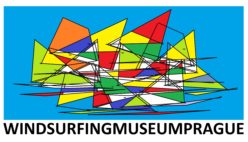Ben Oakley
(with help from Warren Aitken, John Ayton & Bruce Matlack)

Back to main menu / Expo / Sails catalogue / Boards catalogue / BAJA board / Early Windsurfer Sails – #1 to #1000
Zpět na hlavní menu CZ /
I am intrigued how Hoyle Schweitzer and others went from zero to polyethylene heroes in a short time. I noticed that in mountain biking, snowboarding & skateboarding the period from custom equipment experiments to industrial mass-production was many years. For mountain biking at least 8 years, whilst for snowboarding & skateboarding from 8 – 30+ years. Yet, in windsurfing from Jim Drake’s initial conception to industrial production took just three years (1967-70). Not only was the Windsurfer a new product but the polyethylene plastic rotomolding process was relatively new. Also, it was a big object compared to say, the Hula Hoop or Frisbee (also from California).
In an American Windsurfer magazine interview [1996, print copy] Hoyle said in the early days when they were making custom glass Baja boards ‘I ran across a guy who just sort of changed our lives… he was really enthusiastic’. That guy was Elmer Good, also in California. His Hollowform company had perfected the rotomolding process of making large (4 metre) containers for transporting missiles using plastic & foam for the US military (see picture). Hoyle soon transitioned to industrial scale production in polyethylene (i.e., The Windsurfer product) moving away from the fragility and time-consuming custom build of the GRP Baja board.
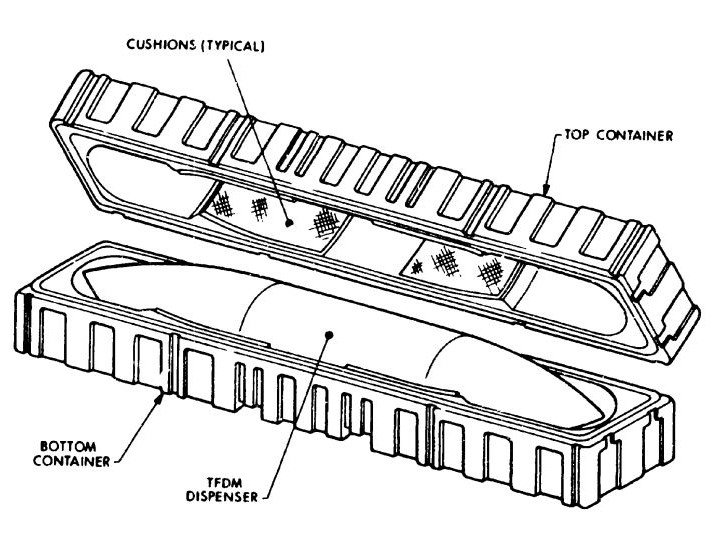
New Zealander, Warren Aitken (Windsurfing International [WI] Production Manager 1976-85) picks up the story. ‘When I first started work with Hoyle part of my job was to bring over the missile containers from Hollowform in a truck & we would ‘foam’ them for Elmer whilst he continued to make the Windsurfer shells.’ The board foaming was also done at WI. So it seems Hollowform, in the early years produced the Windsurfer for Hoyle. The first few hundred were coloured yellow (see photos). Hollowform also made the first plastic kayaks (1973), the River Chaser, also in yellow (see kayak photo).
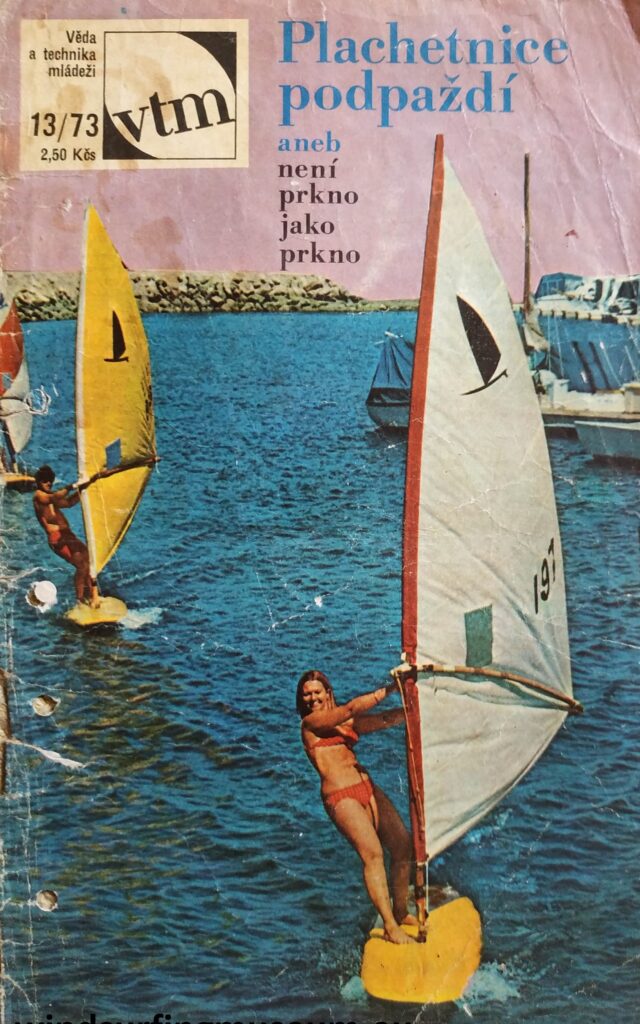
Diane and Hoyle Schweitzer (1971) on early yellow mass-produced polyethylene boards.
Source: VTM magazine, 1973, Windsurfing Museum Prague archives (pictures obtained from original DuPont magazine, July-August, 1971).

Hoyle later described how Elmer ‘grabbed this project & ran with it & he connected us to a craftsman [Bill Cushenbery] who handmade the mold out of sheet aluminum. Bill was a car customiser who has a long list of credits listed on his Wikipedia entry including the 1966 TV Batmobile car (see photos).
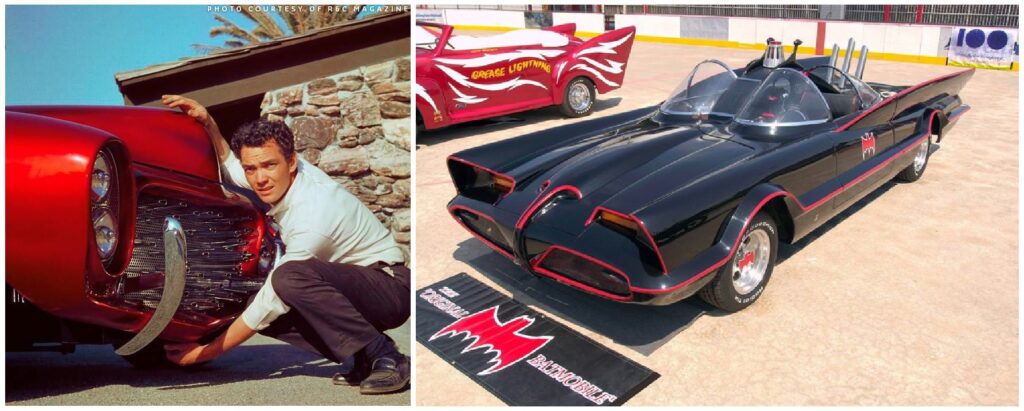
Picture Right: Bill Cushenbery’s famous Batmobile created for the 1966-68 TV series. Source: https://en.wikipedia.org/wiki/Batmobile#/
We gradually developed that process with Elmer, who kept producing for us for years.’ Pete Corona took over this skilled mold-making work and was succeeded (1978) by John Ayton (Maintenance Engineer WI), whose role became a final assembler of the mold machines.
Inside the WI factory these polyethylene heroes expertise developed when they started making their own boards (the exact timing of this is not known but c. 1972-5 period?). In two photos of the process you see:
– Warren polishing inside a mold and
– polyethylene granuals being poured into a mold,

Source: John Ayton, Windsurfing International (California).

Hoyle concludes: ‘Finally, we designed our own equipment & started rotomolding ourselves’. Pete Corona helped develop a ‘Rock n Roll’ motion machine which licensees later used. ‘In fact, the equipment that we designed, we were able to sell to other people. So, it was a big step forward in rotomolding.’ Through meeting the right people Hoyle had fortunately developed an important part of his business model: later being able to set up licensees & production overseas in Netherlands, South Africa, Australia and Japan.
Warren Aitken went on to start his own successful rotomolding company Cobra Kayaks in California which he sold in 2008 & returned home to New Zealand.
If you liked this story, we recommend this history for you: BAJA board (1968-1971) & Early windsurfing sails (1968-1972).
References and sources:
– American Windsurfer (1996) [print], Hoyle Schweitzer interview, Vol. 4, Issue 4 (p.50).
– Bill Cushenbery page on Wikipedia: https://en.wikipedia.org/wiki/Bill_Cushenbery
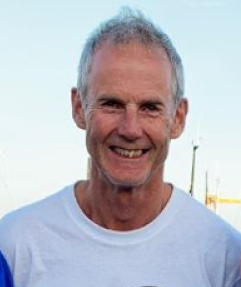
Author´s BIO:
Ben is a Professor at the Open University (UK) where he established the online study of sport and has written for FIFA, UNICEF and the BBC. His research on windsurfing’s rapid global diffusion is freely available in the History of Sport journal. Previously he worked as UK National Coach and attended the Olympic Games in 1988 and 1992 in this role. Originally he raced Windsurfer, Open and Mistral Classes at World Championships (1980-85).
Provided for Non-Commercial and Educational Use only. If you really feel the need to copy and repost images and museum web page content, please respect credits & sources (at least as they are stated).
We try to acknowledge the sources of used images and documents and give credits to those who deserve it. Please let us know if you find any omissions or mistakes. Thanks.
